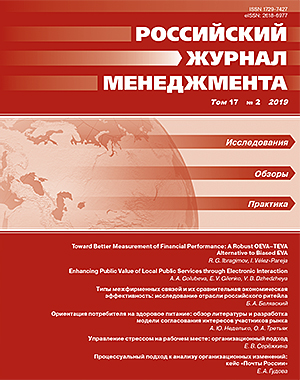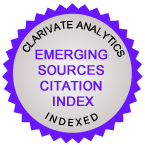Ориентация потребителя на здоровое питание: обзор литературы и разработка модели согласования интересов участников рынка
DOI:
https://doi.org/10.21638/spbu18.2019.204Аннотация
Ориентация потребителя на здоровое питание зависит от деятельности компаний, предлагающих продукты, государственной политики в этой сфере, а также от информированности потребителя и его способности осуществить выбор. Возможность реализации выбора населения в пользу здорового питания во многом обеспечивается тем, насколько хорошо согласованы действия компаний и государства. В статье проведен критический обзор подходов к определению вредных и полезных для здоровья продуктов питания, а также практик государственного регулирования деятельности компаний в сфере производства продуктов здорового питания. В результате обоснована необходимость согласования разнонаправленных интересов участников рынка для обеспечения регулирования продаж вредных для здоровья продуктов питания. Для решения этой проблемы предложена модель согласования интересов государства, компаний и потребителей, с помощью которой могут быть рассчитаны оптимальные цены на продукты питания и определены соответствующие ставки налогообложения.
Ключевые слова:
здоровое питание, ориентация потребителя, обзор литературы, меры государственного регулирования, трехуровневая оптимизация
Скачивания
Библиографические ссылки
ЛИТЕРАТУРА НА РУССКОМ ЯЗЫКЕ
REFERENCES IN LATIN ALPHABET
Translation of references in Russian into English
Загрузки
Опубликован
Как цитировать
Выпуск
Раздел
Лицензия
Статьи журнала «Российский журнал менеджмента» находятся в открытом доступе и распространяются в соответствии с условиями Лицензионного Договора с Санкт-Петербургским государственным университетом, который бесплатно предоставляет авторам неограниченное распространение и самостоятельное архивирование.





